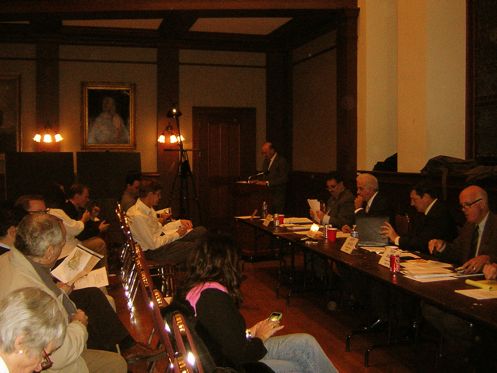Gerrymandered Georgetown?

Our ANC (Advisory Neighborhood Commission) is a legal D.C. government entity created to represent neighborhood voices in local and district-wide decision making. But in Georgetown, the question that must be asked in the coming weeks is whether our local ANC, called "ANC 2E" is, itself, representative.
As a result of population growth, ANC 2E will be redistricted to add an eighth seat. There are two competing proposals as to how this redistricting should be done. One plan unfairly undermines student representation and creates unbalanced districts; the other plan distributes seats equitably and represents all neighbors equally. As Georgetown and the broader community consider these plans in the coming days, we must all ask ourselves: is ANC 2E going to represent all Georgetown residents?
As it stands today, there are seven "single member districts" in ANC 2E, with a student representing only one seat. As students make up roughly 45% of Georgetown’s population, this is clearly an unfair allocation. As the ANC affirmed in its 2002 Student Bill of Rights, students have the right “to full participation in community and civic affairs,” and that the ANC should oppose “illegal discrimination against all citizens based upon matriculation status.” With redistricting, the ANC has a chance to live up to this mandate and represent all residents equally.
So let’s consider the two plans. The first has been put forward by the co-chairs of the ANC 2E redistricting task force. This plan would divide the university into two districts, packing upwards of 2500 students in each. The remaining six districts would be comprised of anywhere between roughly 1,660 and 1,980 residents in predominantly non-student areas.
A vastly more equitable proposal has been put forward by Georgetown University student John Flanagan. Flanagan’s plan would create two university districts as well, but one of the remaining six would be a mixed district of both students and Georgetown neighborhood residents. All of his districts would be equitably comprised of between 1800 and 2200 people.
If equally-sized districts aren’t reason enough to support Flanagan’s plan, consider this. A memo released by D.C. Councilmembers Michael Brown (At-large) and Jack Evans (Ward Two) on the 2010 redistricting process states that "each single-member district shall have a population of approximately 2,000 people, and shall be as nearly equal as possible." And, under §1-1332 of the D.C. Code, “(e) No redistricting plan or proposed amendment to a redistricting plan shall result in district populations with a deviation range greater than 10% or a relative deviation greater than plus-or-minus 5%.”
The co-chairs’ plan does not adhere to these regulations, and the result is a set of deeply gerrymandered districts that have the effect, intended or not, of under-representing a significant portion of Georgetown’s residents. Flanagan’s plan not only follows D.C. law, but does so by drawing sensible lines that respect the distinctive geographical integrity of different parts of Georgetown while ensuring democratic districts that comply with previous ANC and D.C. directives.
One of the primary exemption clauses which the co-chairs have presented to defend their plan relies on the faulty premise that, somehow, equal representation of student voices is “disruptive to neighborhood cohesiveness.” If the co-chairs wish to suggest that student voices are disruptive in a neighborhood in which we make up 45% of the population, I have to ask, with whom is the other 55% trying to cohere?
All of Georgetown’s residents have good right to complain about certain things: late night drunkenness, manipulative landlords, and rodent infestation to name a few. But the elected officials of the neighborhood cannot claim representative legitimacy if they continue to claim that students are second-class citizens and that student voices are disruptive to some nebulous sense of “cohesiveness.”
Students live here and work here. A recent report by the Consortium of Universities of the Washington Metropolitan area found that D.C. students contribute $11.3 billion to the local economy. Students love Georgetown and want to help build it into a place where businesses can thrive and people of all stripes can live, work, and raise a family.
If the ANC redistricting task force co-chairs think students ought not to have equal representation, then I challenge them to argue this outright. Stop couching this argument in cloudy language that questions the previously affirmed equal status of students as residents and as a protected class under D.C.’s Human Rights law. Don’t degrade 45% of Georgetown residents by trying to muzzle our voices. I urge ANC 2E to recognize that working with students to improve Georgetown is a far more constructive way to make our neighborhood a better place.
Mike Meaney is President of the Georgetown University Students Association and a columnist for The Georgetown Dish, which welcomes the views of ANC Commissioners, student and non-student residents, and other community leaders.





